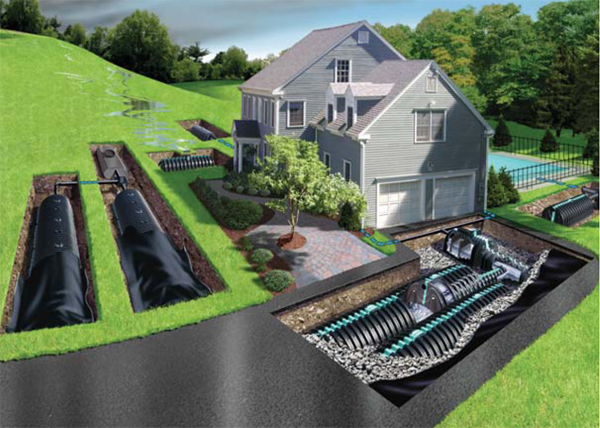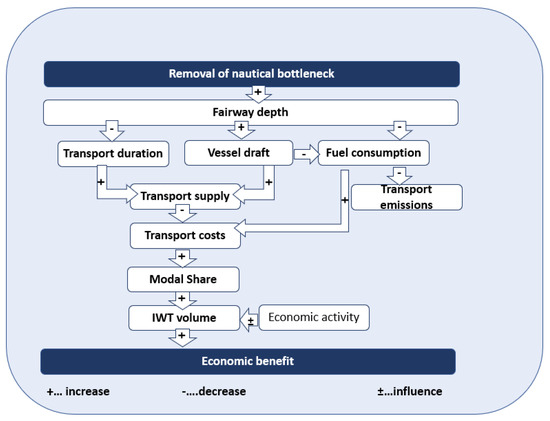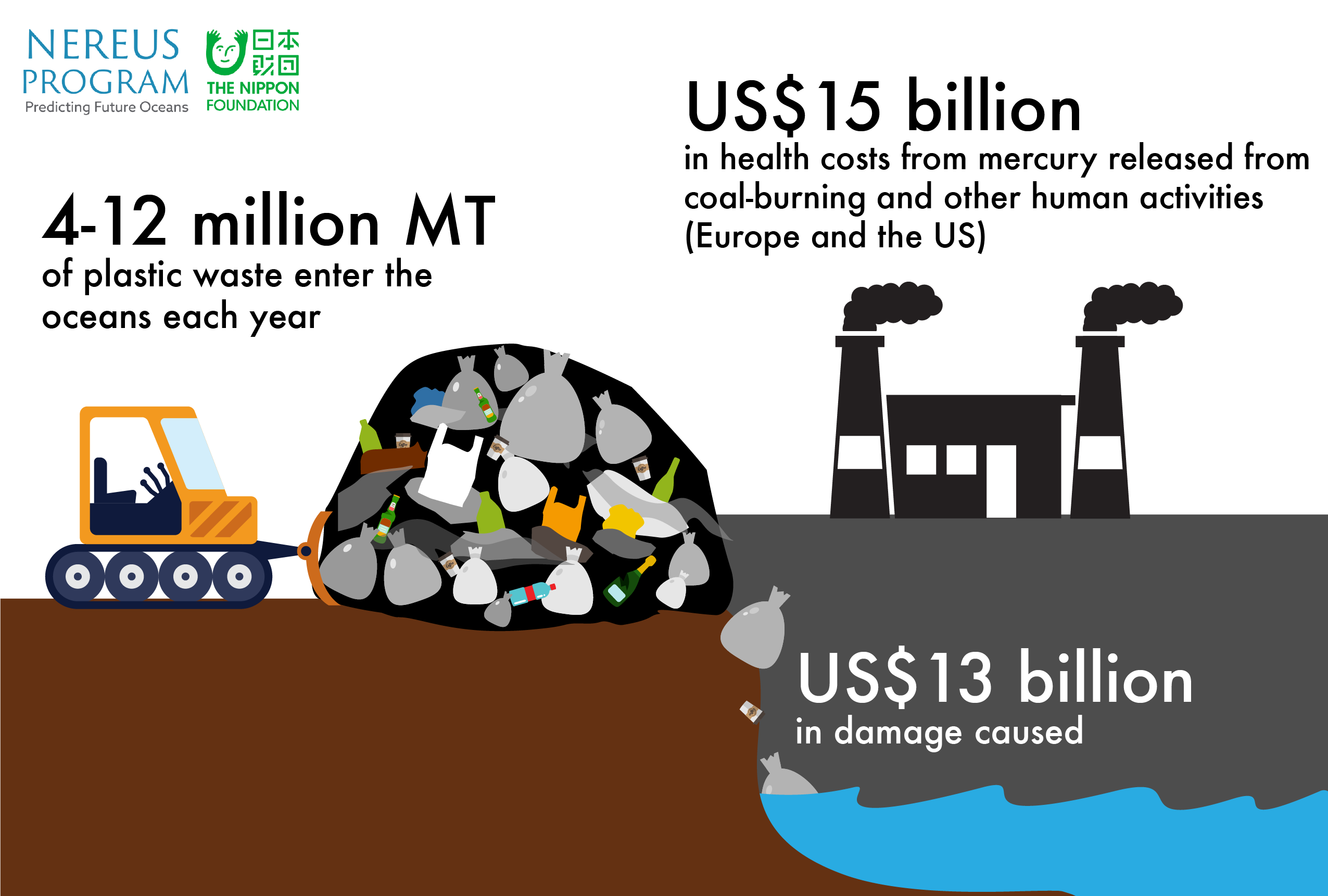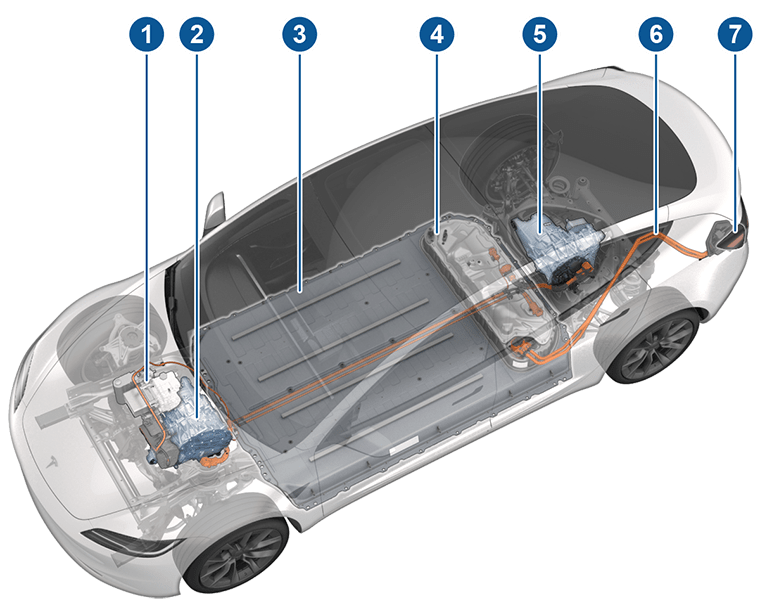Innovating Home Energy: Solar Solutions for Modern Living

Revolutionizing Living Spaces: Solar Home Innovations
Solar home innovations are reshaping the way we approach energy consumption and sustainable living. This article explores cutting-edge technologies and innovations that leverage solar power to enhance comfort, efficiency, and environmental consciousness in modern homes.
Integrating Solar Panels into Architectural Design
Modern solar innovations go beyond traditional rooftop solar panels. Architects and designers are integrating solar panels seamlessly into the architecture of homes. Solar roof tiles, solar windows, and solar facades are becoming popular choices, allowing solar technology to blend harmoniously with the aesthetic appeal of the home.
Energy-Generating Smart Windows
Smart windows are a breakthrough in solar home innovations. These windows not only provide natural light but also harness solar energy. Some smart windows are equipped with transparent solar cells that generate electricity while allowing visible light to pass through. This innovation enhances energy efficiency and reduces reliance on artificial lighting.
Solar-Powered Home Automation Systems
Solar-powered home automation systems are transforming how we control and manage various aspects of our homes. From smart thermostats to solar-powered security cameras, these innovations leverage solar energy to operate efficiently. Solar-powered sensors and devices contribute to the sustainability of smart home ecosystems.
Solar Water Heating Solutions
Solar water heaters have been a longstanding solar innovation, but advancements in technology continue to improve their efficiency. Innovations such as solar water heating systems with integrated energy storage and smart controls optimize water heating processes, reducing energy consumption and lowering utility costs.
Solar-Powered HVAC Systems
Heating, ventilation, and air conditioning (HVAC) systems account for a significant portion of home energy usage. Solar-powered HVAC systems harness solar energy to heat or cool homes. These systems use solar collectors or solar panels to generate power, providing a sustainable and cost-effective alternative to conventional HVAC systems.
Portable Solar Solutions for Off-Grid Living
For those seeking off-grid living or exploring portable solar options, innovations like solar-powered generators and portable solar panels are game-changers. These devices allow homeowners to harness solar energy in remote locations or during power outages, providing a reliable source of clean energy.
Solar Energy Storage Solutions
Solar energy storage solutions, such as solar batteries, are crucial innovations for optimizing solar power usage. These batteries store excess energy generated during sunny periods for later use, ensuring a continuous power supply even during nighttime or cloudy days. This advancement enhances the reliability and independence of solar-powered homes.
Solar-Powered Outdoor Living Spaces
Innovations in solar-powered outdoor amenities enhance the sustainability of living spaces beyond the home’s interior. Solar-powered outdoor lighting, solar water features, and even solar charging stations for electric outdoor equipment contribute to creating eco-friendly and energy-efficient outdoor environments.
Educational Initiatives for Solar Literacy
Promoting solar literacy is essential for the widespread adoption of solar home innovations. Educational initiatives that inform homeowners about the benefits, installation processes, and long-term savings associated with solar technologies empower individuals to make informed decisions. Solar literacy fosters a greater understanding of the positive impact of solar innovations on both homes and the environment.
Embracing a Solar-Powered Future
In conclusion, solar home innovations represent a transformative shift towards a sustainable and efficient future. From integrated architectural design to smart home systems and outdoor amenities, the possibilities are expanding. Exploring and embracing these innovations not only enhances the functionality of homes but also contributes to a greener and more eco-conscious way of living. Learn more about Solar Home Innovations at SolarHelp.info for a comprehensive guide to integrating solar technologies into modern living spaces.
Dependable Home Drainage: Ensuring Seamless Water Flow

Uninterrupted Flow: The Essence of Reliable Home Drainage
Ensuring reliable home drainage is essential for maintaining a healthy and functional living space. This article explores the importance of reliable drainage systems, common issues homeowners may encounter, and proactive measures to guarantee a seamless flow of water within and around the home.
The Significance of Reliable Drainage
Reliable home drainage is fundamental to preventing water damage, flooding, and potential health hazards. A well-designed and properly maintained drainage system ensures that rainwater, wastewater, and other liquids are efficiently directed away from the home. This not only protects the structural integrity of the property but also safeguards the health and well-being of its occupants.
Identifying Common Drainage Issues
Understanding common drainage issues is the first step towards ensuring reliability. Issues such as clogged drains, poor slope grading, foundation cracks, and insufficient gutter systems can lead to water accumulation and drainage failure. Identifying these issues early on allows homeowners to address them before they escalate into more significant problems.
Clogged Drains: A Common Culprit
Clogged drains are a prevalent issue that can disrupt the reliability of home drainage. Hair, soap scum, grease, and debris often accumulate in pipes, causing slow drainage or complete blockages. Regular maintenance, such as using drain screens and environmentally friendly cleaning solutions, can prevent clogs and maintain the flow of water.
The Role of Proper Slope Grading
The slope grading around a home plays a crucial role in reliable drainage. An improper slope can lead to water pooling around the foundation, risking water seepage into basements and crawl spaces. Ensuring proper grading away from the home allows rainwater to flow away naturally, reducing the likelihood of water-related issues.
Foundation Cracks and Waterproofing
Foundation cracks can compromise the reliability of home drainage, allowing water to infiltrate the structure. Waterproofing measures, including sealing foundation cracks and applying exterior waterproof coatings, are essential for preventing water intrusion. Addressing foundation issues promptly is key to maintaining a dry and secure living space.
Gutter Systems for Efficient Water Management
An efficient gutter system is a linchpin of reliable home drainage. Gutters collect rainwater from the roof and direct it away from the foundation through downspouts. Regular gutter cleaning and maintenance prevent clogs, ensuring that water flows freely. Installing gutter guards further enhances the effectiveness of the gutter system.
Professional Inspection and Maintenance
Regular professional inspection and maintenance are integral to ensuring the reliability of home drainage systems. Certified inspectors can identify potential issues, assess the overall condition of drainage components, and recommend necessary repairs or improvements. Scheduled maintenance, including gutter cleaning and pipe inspections, prevents surprises and enhances system longevity.
Sustainable Landscaping for Drainage Harmony
Sustainable landscaping practices contribute to reliable home drainage. Choosing plants that absorb excess water, implementing rain gardens, and using permeable materials for pathways promote efficient water absorption. Thoughtful landscaping reduces runoff, preventing water from pooling and ensuring that drainage systems operate optimally.
Investing in Quality Drainage Solutions
Investing in quality drainage solutions is a proactive measure that pays off in the long run. High-quality materials for pipes, gutters, and downspouts, coupled with professional installation, enhance the reliability and durability of the drainage system. Homeowners should consider drainage as a critical component of overall property maintenance.
A Holistic Approach to Home Drainage
In conclusion, ensuring reliable home drainage requires a holistic approach that encompasses preventive measures, regular maintenance, and prompt resolution of identified issues. Homeowners play a crucial role in maintaining the functionality of drainage systems, protecting their homes from potential water damage. To explore more about reliable home drainage and practical steps for implementation, visit Reliable Home Drainage for valuable insights and resources. Embrace the proactive path towards a home environment with dependable water flow and protection.
Solar for Savings: Affordable Home Energy Solutions

Solar for Savings: Unveiling Affordable Home Energy Solutions
The pursuit of affordable home solar solutions has become a compelling aspect of the broader push towards sustainable and cost-effective living. In this article, we explore the various facets of affordable home solar options, delving into how they provide a gateway to cleaner, renewable energy while being budget-friendly for homeowners.
1. The Rise of Affordable Home Solar: A Renewable Revolution
Affordable home solar solutions have experienced a significant rise in popularity as the cost of solar technology has decreased and accessibility has increased. Homeowners are increasingly recognizing the value of harnessing solar power as a sustainable and economical alternative to traditional energy sources.
2. Economic Benefits: Savings Over the Long Term
One of the primary advantages of affordable home solar is the economic benefits it offers over the long term. While the initial investment may seem substantial, the savings on monthly energy bills and the potential for government incentives can make solar systems a financially wise decision for homeowners.
Affordable Home Solar: Unlocking Savings Potential
To explore how you can unlock the savings potential of affordable home solar, visit Affordable Home Solar. This comprehensive resource provides insights and guidance on adopting solar energy, making the transition to a more sustainable and cost-effective home seamless.
3. Government Incentives: Making Solar More Accessible
Government incentives and rebates play a crucial role in making affordable home solar more accessible. Many governments offer financial benefits, tax credits, or rebates to homeowners who choose to install solar panels. These incentives further enhance the affordability of solar solutions, encouraging more households to make the switch.
4. Financing Options: Spreading the Cost Burden
To make affordable home solar even more accessible, various financing options are available. Homeowners can explore solar loans, leases, or power purchase agreements (PPAs) that allow them to install solar panels with little to no upfront costs. This spreading of the cost burden makes solar energy financially viable for a broader range of households.
5. Technological Advances: Efficiency and Cost Reduction
Advancements in solar technology have contributed to increased efficiency and reduced costs of solar panels. Higher efficiency means that modern solar panels can generate more electricity from the same amount of sunlight, making them a more cost-effective investment for homeowners looking to maximize their energy production.
6. Net Metering: Offsetting Energy Costs
Net metering is a policy that allows homeowners with solar panels to receive credit for excess electricity they generate and feed back into the grid. This credit offsets the electricity they consume when their solar panels are not generating power, providing an additional mechanism for homeowners to save on energy costs.
7. Environmental Impact: Clean, Green Energy
Beyond economic benefits, affordable home solar solutions contribute significantly to environmental sustainability. Solar energy is clean and renewable, producing electricity without emitting harmful pollutants or greenhouse gases. By choosing solar, homeowners actively participate in reducing their carbon footprint and supporting a cleaner, greener future.
Conclusion: A Brighter and Affordable Energy Future
In conclusion, affordable home solar solutions are not just a smart financial choice; they also contribute to a brighter and more sustainable energy future. With economic benefits, government incentives, financing options, and environmental impact, the advantages of embracing solar power extend beyond individual households to benefit the planet as a whole. As technology continues to advance and awareness grows, affordable home solar is poised to play an increasingly prominent role in shaping the way we power our homes.
Sustainable Choices: The Environmental Responsibility Benefit

Sustainable Choices: Embracing the Environmental Responsibility Benefit
In an era where environmental concerns take center stage, individuals and businesses are recognizing the importance of environmental responsibility. This article explores the multifaceted benefits of embracing environmental responsibility, shedding light on the positive impact it has on both the planet and those who make sustainable choices.
1. The Call for Environmental Responsibility: A Global Imperative
The increasing awareness of climate change and environmental degradation has elevated the call for environmental responsibility to a global imperative. Individuals, communities, and businesses are urged to reconsider their actions and make choices that prioritize the health of the planet. It is a collective effort that holds the key to a sustainable and thriving future.
2. Environmental Stewardship: Preserving Ecosystems and Biodiversity
At the core of environmental responsibility lies the concept of environmental stewardship. By making conscious choices to reduce carbon footprints, minimize pollution, and protect natural habitats, individuals contribute to preserving ecosystems and biodiversity. Environmental stewardship is a fundamental aspect of sustainable living, ensuring that future generations inherit a planet teeming with life.
3. Sustainable Consumption: Reducing Environmental Impact
Embracing environmental responsibility involves reevaluating consumption patterns. Sustainable choices in what we buy, use, and discard play a crucial role in reducing environmental impact. From choosing eco-friendly products to supporting companies with environmentally conscious practices, sustainable consumption becomes a powerful tool for positive change.
4. Renewable Energy Adoption: A Path to Cleaner Futures
One of the most impactful ways to exercise environmental responsibility is through the adoption of renewable energy sources. Harnessing solar, wind, and other renewable energies reduces dependence on fossil fuels, mitigating the environmental impact associated with traditional energy sources. The shift towards renewable energy is a cornerstone of sustainable and responsible living.
Environmental Responsibility Benefit: A Transformative Link
To explore how you can contribute to the environmental responsibility benefit, visit Environmental Responsibility Benefit. This comprehensive resource provides valuable insights and practical tips on adopting sustainable practices, making informed choices, and contributing to a greener and healthier planet.
5. Circular Economy: Minimizing Waste and Maximizing Resources
The concept of a circular economy aligns seamlessly with environmental responsibility. Moving away from the linear “take, make, dispose” model, a circular economy focuses on minimizing waste and maximizing the lifespan of resources through recycling, reusing, and repurposing. This approach ensures that materials stay in circulation, reducing the strain on the environment.
6. Conservation Efforts: Protecting Endangered Species and Habitats
Environmental responsibility extends to active participation in conservation efforts. Supporting organizations dedicated to protecting endangered species and habitats, participating in reforestation projects, and advocating for wildlife conservation are tangible ways individuals can contribute to the preservation of Earth’s rich biodiversity.
7. Carbon Offsetting: Balancing Emissions with Positive Actions
For those aspects of life where emissions are unavoidable, carbon offsetting becomes a valuable tool. Supporting projects that sequester or reduce greenhouse gas emissions, such as reforestation initiatives or renewable energy projects, allows individuals and businesses to balance their carbon footprint, contributing to a net-positive environmental impact.
Conclusion: A Future Shaped by Responsible Choices
In conclusion, embracing environmental responsibility is not just a choice but a responsibility we owe to the planet and future generations. From individual actions to collective efforts, every step towards sustainability and eco-conscious living contributes to a brighter and healthier future. By recognizing the environmental responsibility benefit, individuals become active participants in shaping a world where responsible choices are the norm, not the exception.
Carbon-Neutral Choice Benefit: Sustainable Impact for Tomorrow

Sustainable Impact for Tomorrow: The Carbon-Neutral Choice Benefit
Choosing a carbon-neutral lifestyle is more than an environmental gesture; it’s a commitment to shaping a sustainable future. Explore the multifaceted benefits of the Carbon-Neutral Choice and its profound impact on the environment and personal well-being.
Understanding the Carbon-Neutral Choice
The Carbon-Neutral Choice revolves around the principle of balancing carbon emissions with efforts to reduce or offset them. It involves minimizing one’s carbon footprint through sustainable practices and supporting initiatives that remove or capture an equivalent amount of greenhouse gases from the atmosphere.
Environmental Stewardship and Climate Mitigation
At the core of the Carbon-Neutral Choice is environmental stewardship. By actively participating in carbon reduction and offset programs, individuals contribute to climate mitigation. This choice aligns with global efforts to combat climate change, reduce greenhouse gas emissions, and create a more sustainable and resilient planet.
Renewable Energy Adoption for Carbon Neutrality
A pivotal aspect of the Carbon-Neutral Choice is the adoption of renewable energy sources. Transitioning to solar or wind energy for electricity needs is a proactive step toward carbon neutrality. By supporting clean energy, individuals not only reduce their carbon footprint but also promote the growth of sustainable energy alternatives.
Carbon Offsetting Initiatives for Positive Impact
Carbon offsetting is a key strategy within the Carbon-Neutral Choice. Supporting projects such as reforestation, renewable energy installations, or methane capture initiatives allows individuals to offset their unavoidable emissions. These initiatives contribute to positive environmental impact and promote sustainable practices.
Economic Benefits and Financial Savings
Beyond its environmental impact, the Carbon-Neutral Choice can bring about economic benefits. Investing in energy-efficient technologies, renewable energy sources, and participating in carbon offset programs can lead to long-term financial savings. This economic aspect reinforces the idea that sustainability and financial prudence can go hand in hand.
Health and Well-Being through Clean Living
Choosing a carbon-neutral lifestyle positively affects personal health and well-being. Embracing clean energy and sustainable practices reduces exposure to pollutants and contributes to cleaner air and water. The Carbon-Neutral Choice goes beyond environmental impact, fostering a healthier living environment for individuals and communities.
Educational Resources for Informed Decisions
Making the Carbon-Neutral Choice requires informed decision-making. Educational resources, such as those available at SolarHelp.info, offer insights into carbon offsetting, renewable energy adoption, and sustainable living practices. Knowledge empowers individuals to make choices that align with their commitment to a carbon-neutral lifestyle.
Community Engagement for Collective Impact
The impact of the Carbon-Neutral Choice extends to communities. Engaging with local initiatives, participating in environmental awareness programs, and encouraging others to make sustainable choices amplify the collective impact. Community engagement transforms individual choices into a powerful force for positive change.
Government Support and Policy Alignment
Governments worldwide recognize the importance of carbon neutrality. Supportive policies, incentives, and carbon reduction targets create an environment conducive to the Carbon-Neutral Choice. By aligning personal choices with government initiatives, individuals contribute to broader climate action goals.
A Legacy of Sustainability for Future Generations
In conclusion, the Carbon-Neutral Choice is a conscious decision to leave a positive legacy for future generations. By embracing sustainable practices, supporting carbon offset initiatives, and advocating for clean energy, individuals contribute to a more sustainable and resilient planet. The impact of this choice extends far beyond the present, shaping a better tomorrow.
Explore the Carbon-Neutral Choice Benefit at SolarHelp.info
Ready to make a meaningful impact? Visit SolarHelp.info to explore resources, guides, and insights on the Carbon-Neutral Choice. Discover how your choices can lead to a more sustainable and carbon-neutral lifestyle, making a positive difference for the environment and future generations.
Economic Benefit Gains: Sowing Seeds of Financial Prosperity

Cultivating Financial Prosperity: The Path to Economic Benefit Gains
In the realm of sustainable practices, the journey towards Economic Benefit Gains represents a transformative approach to financial prosperity. This article explores the multifaceted impact of adopting sustainable measures, from renewable energy to eco-friendly initiatives, and how they contribute to long-term economic benefits.
Sustainable Investments and Financial Resilience
Embracing sustainable investments lays the groundwork for Economic Benefit Gains. Investments in renewable energy, eco-friendly technologies, and socially responsible ventures not only align with ethical values but also offer financial resilience. As the world pivots towards sustainable practices, businesses engaging in such investments are better positioned for long-term economic stability.
Green Jobs and Employment Opportunities
The transition to sustainable practices creates a surge in green jobs, contributing to Economic Benefit Gains. Industries related to renewable energy, energy efficiency, and environmental conservation generate employment opportunities. This not only addresses unemployment concerns but also fosters economic growth by creating a skilled workforce for emerging sectors.
Energy Efficiency and Cost Savings for Businesses
One of the primary avenues for Economic Benefit Gains is the implementation of energy-efficient practices by businesses. Energy-efficient technologies not only reduce operational costs but also enhance the overall competitiveness of businesses in the market. From efficient lighting systems to smart building designs, these initiatives contribute to long-term cost savings.
Renewable Energy Adoption and Reduced Operational Costs
The adoption of renewable energy sources is a cornerstone for Economic Benefit Gains. Businesses that invest in solar, wind, or other clean energy solutions not only contribute to environmental sustainability but also experience reduced operational costs over time. The stability of renewable energy prices offers businesses predictable and favorable financial outcomes.
Government Incentives and Tax Benefits
Governments worldwide recognize the importance of sustainable practices and often provide incentives and tax benefits for businesses embracing eco-friendly measures. These governmental initiatives not only encourage businesses to adopt sustainable technologies but also directly contribute to Economic Benefit Gains by reducing the financial burden of such investments.
Sustainable Practices and Brand Reputation
The integration of sustainable practices positively influences brand reputation, leading to Economic Benefit Gains. Consumers increasingly value businesses committed to environmental and social responsibility. A positive brand image not only attracts more customers but also allows businesses to command premium prices for their products and services.
Resource Efficiency and Supply Chain Resilience
Adopting resource-efficient practices contributes to Economic Benefit Gains by enhancing supply chain resilience. Businesses that prioritize resource efficiency are better equipped to navigate disruptions, whether they stem from resource scarcity, climate-related events, or other global challenges. This adaptability fosters long-term economic sustainability.
Circular Economy Models and Cost Reduction
The transition to circular economy models is a powerful strategy for achieving Economic Benefit Gains. By minimizing waste, reusing materials, and implementing recycling programs, businesses reduce production costs and contribute to environmental conservation. The circular economy approach aligns economic growth with sustainable resource management.
Investing in Sustainable Infrastructure for Economic Growth
Governments and businesses investing in sustainable infrastructure contribute to Economic Benefit Gains on a broader scale. Sustainable infrastructure projects, such as renewable energy installations, public transportation systems, and green buildings, stimulate economic growth, create jobs, and position communities for long-term financial prosperity.
Explore the Path to Economic Benefit Gains Today
Ready to cultivate financial prosperity through sustainable practices? Explore the possibilities and learn more about the path to Economic Benefit Gains by visiting Economic Benefit Gains. Embrace sustainability, drive economic growth, and contribute to a resilient and prosperous future.
In conclusion, Economic Benefit Gains through sustainable practices represent a symbiotic relationship between financial prosperity and environmental responsibility. By investing in sustainable initiatives, businesses and governments not only contribute to a healthier planet but also position themselves for long-term economic stability and growth. The journey towards economic benefits is intertwined with the pursuit of a sustainable and resilient global economy.
Unclog Home Plumbing: Effective Solutions for Clear Pipes

Navigating the Maze: Unclog Home Plumbing with Ease
Maintaining clear and functioning plumbing in your home is crucial for a comfortable living environment. When faced with clogged pipes, it’s essential to address the issue promptly to prevent further damage. This article explores effective solutions and preventive measures to unclog home plumbing, ensuring a hassle-free and smoothly flowing system.
Understanding the Culprits: Common Causes of Clogs
Before delving into solutions, it’s essential to understand the common causes of clogged home plumbing. Accumulation of hair, soap scum, grease, food particles, and foreign objects are typical culprits. Identifying the source of the clog helps in choosing the most effective method for unclogging.
DIY Solutions: Tackling Minor Clogs at Home
For minor clogs, several do-it-yourself (DIY) solutions can be effective. Using a plunger to create suction and dislodge blockages is a classic method. Baking soda and vinegar, as well as hot water, can be poured down drains to break down organic matter and flush away debris. These DIY approaches are often successful for minor obstructions.
The Power of Plumbing Tools: Augers and Snakes
For more stubborn clogs, plumbing tools like augers and snakes become invaluable. A plumbing auger, also known as a drain snake, is designed to navigate through pipes, breaking up or pulling out blockages. These tools are particularly effective for clogs that are deeper in the plumbing system or harder to reach.
Chemical Drain Cleaners: Caution and Considerations
Chemical drain cleaners are readily available for unclogging pipes, but caution is advised. While they can dissolve certain types of clogs, they also contain harsh chemicals that may damage pipes and pose health risks. It’s crucial to follow safety guidelines, use these products sparingly, and consider alternative methods for a more environmentally friendly approach.
Preventive Measures: Avoiding Future Clogs
Preventing clogs is as crucial as addressing existing ones. Implementing preventive measures can significantly reduce the frequency of plumbing issues. Regularly cleaning drains with a mixture of baking soda and vinegar, using drain strainers to catch debris, and being mindful of what goes down drains are simple yet effective preventive strategies.
Professional Intervention: When to Call a Plumber
In some cases, clogs may be severe or located deep within the plumbing system, requiring professional intervention. Calling a plumber becomes necessary when DIY methods and tools prove ineffective. Professional plumbers have the expertise and specialized equipment to diagnose and resolve complex plumbing issues efficiently.
Hydro Jetting: High-Pressure Cleaning for Stubborn Clogs
Hydro jetting is an advanced and highly effective method for clearing stubborn clogs. This technique involves using a high-pressure stream of water to clean and unclog pipes. Hydro jetting is particularly useful for removing built-up grease, mineral deposits, and other hard-to-reach obstructions, restoring the flow of water in the plumbing system.
Regular Maintenance: Key to a Healthy Plumbing System
Maintaining clear pipes goes hand in hand with regular plumbing system maintenance. Periodic inspections, cleaning, and addressing minor issues before they escalate contribute to the overall health of your home plumbing. Regular maintenance not only prevents clogs but also prolongs the lifespan of your plumbing system.
Educational Outreach: Empowering Homeowners with Knowledge
Educational outreach about proper plumbing care is essential for empowering homeowners. Workshops, online resources, and community initiatives that provide information about best practices, environmental considerations, and the importance of preventive measures contribute to a more informed and proactive community.
Conclusion: Enjoying Uninterrupted Plumbing Flow
In conclusion, unclogging home plumbing requires a combination of DIY solutions, tools, preventive measures, and, when necessary, professional assistance. By understanding the common causes of clogs and adopting preventive strategies, homeowners can enjoy uninterrupted plumbing flow and a healthy, well-functioning system. Explore more about Unclog Home Plumbing here and take proactive steps toward maintaining clear and efficient pipes in your home.
Sustainably Thriving: The Sustainable Development Advantage

Sustainably Thriving: Unveiling the Sustainable Development Advantage
Sustainable development has emerged as a guiding principle for creating a balance between societal progress, economic growth, and environmental preservation. This article explores the Sustainable Development Benefit, delving into how embracing sustainability can lead to a more inclusive, resilient, and environmentally responsible future.
1. The Holistic Vision of Sustainable Development
At its core, sustainable development is a holistic vision that seeks to meet the needs of the present without compromising the ability of future generations to meet their own needs. It encompasses economic, social, and environmental dimensions, recognizing the interconnectedness of these aspects in fostering long-term well-being.
2. Economic Prosperity with Environmental Responsibility
One of the key advantages of sustainable development is the harmonious integration of economic prosperity and environmental responsibility. By adopting practices that reduce environmental impact, businesses contribute to the preservation of ecosystems and biodiversity while also ensuring the longevity and stability of their economic activities.
Sustainable Development Benefit: Explore how sustainable practices can lead to inclusive development at Sustainable Development Benefit. Learn more about the positive impacts on society, the economy, and the environment.
3. Social Equity and Inclusion: Building Resilient Communities
Sustainable development emphasizes social equity and inclusion, seeking to eradicate poverty, reduce inequalities, and promote access to education, healthcare, and opportunities for all. By fostering resilient communities, sustainable development works towards creating a more just and equitable society where everyone has the chance to thrive.
4. Environmental Conservation: Preserving Natural Resources
A cornerstone of sustainable development is the conservation of natural resources. By implementing eco-friendly practices and renewable energy sources like solar power, communities contribute to the preservation of ecosystems, reduce pollution, and promote the sustainable use of resources, safeguarding the planet for future generations.
5. Climate Change Mitigation and Adaptation
Sustainable development actively addresses the challenges of climate change by both mitigating its causes and adapting to its impacts. By transitioning to clean energy sources, implementing green infrastructure, and adopting climate-resilient practices, societies contribute to global efforts to limit temperature rise and build resilience against climate-related challenges.
6. Circular Economy: Minimizing Waste and Maximizing Resources
The concept of a circular economy is integral to sustainable development. It promotes minimizing waste and maximizing the use of resources through practices such as recycling, reusing, and upcycling. This approach reduces the environmental footprint of production and consumption, creating a more sustainable and efficient economic model.
7. Government Policies and Global Collaboration
Sustainable development benefits from the formulation of government policies that prioritize environmental conservation, social welfare, and economic stability. Additionally, global collaboration is crucial, as interconnected challenges like climate change and biodiversity loss require collective efforts and shared responsibility to achieve meaningful and lasting results.
Conclusion: Shaping a Better Future through Sustainability
In conclusion, the Sustainable Development Benefit goes beyond a mere concept; it is a roadmap for shaping a better future. By embracing sustainable practices that balance economic growth, social inclusion, and environmental stewardship, societies can foster a world where prosperity is shared, ecosystems are preserved, and future generations inherit a planet that is thriving and resilient. As individuals, communities, and nations continue to prioritize sustainable development, the path to a more sustainable, equitable, and harmonious future becomes clearer and more achievable.
Solar Energy for Home: Clean Power Solutions

Solar Energy for Home: Clean Power Solutions
Harnessing the power of the sun for your home not only reduces your environmental impact but also offers a sustainable and cost-effective energy solution. Explore the benefits and considerations of adopting solar energy for your home.
1. The Rise of Solar Energy for Homes
Solar energy has become increasingly popular for residential use. The advancement of technology and the decreasing cost of solar panels have made it more accessible for homeowners. Embracing solar energy for your home is a proactive step towards a cleaner and more sustainable energy future.
2. Cost Savings and Financial Benefits
One of the primary attractions of solar energy for homes is the potential for significant cost savings. While the initial investment in solar panels and installation may seem substantial, the long-term financial benefits far outweigh the upfront costs. Reduced electricity bills and potential incentives contribute to a compelling financial case for solar adoption.
3. Environmental Impact and Sustainability
Choosing solar energy for your home is a conscious decision to reduce your carbon footprint. Solar power is a clean and renewable energy source that produces minimal greenhouse gas emissions. By generating electricity from sunlight, you contribute to a healthier planet and a more sustainable future for generations to come.
4. Off-Grid Capability and Energy Independence
Solar energy systems can provide off-grid capability, offering homeowners energy independence. With the integration of energy storage solutions, excess energy generated during sunny periods can be stored for use during cloudy days or at night. This level of self-sufficiency adds resilience to your home’s energy supply.
5. Net Metering and Selling Excess Energy
Many regions offer net metering programs, allowing homeowners to sell excess energy back to the grid. This not only offsets the cost of electricity but also contributes to the overall grid’s energy mix. Being a prosumer, both a consumer and a producer of energy, adds another layer of benefit to adopting solar energy for your home.
6. Technological Advances in Solar Panels
Advancements in solar panel technology have increased efficiency and reduced the overall cost. Modern solar panels are more durable, efficient, and aesthetically pleasing. As technology evolves, homeowners can benefit from improved performance and enhanced integration into various architectural designs.
7. Government Incentives and Tax Credits
Governments worldwide recognize the importance of transitioning to renewable energy sources and often provide incentives to homeowners. These incentives may come in the form of tax credits, rebates, or grants, making the adoption of solar energy for your home more financially feasible and attractive.
8. Considerations for Homeowners
Before transitioning to solar energy, homeowners should consider various factors. These include the geographical location, the amount of sunlight the property receives, the available roof space, and local regulations. Conducting a thorough assessment ensures optimal system design and performance.
9. Professional Installation and Maintenance
While solar panels are designed for durability, professional installation and regular maintenance are essential for optimal performance. Engaging certified installers ensures proper setup and adherence to safety standards. Regular maintenance checks help identify and address any issues promptly.
10. Solar Energy for Home: A Sustainable Investment
In conclusion, adopting solar energy for your home is more than a technological upgrade; it’s a sustainable investment in the future. The benefits, ranging from financial savings to environmental stewardship, make solar adoption an attractive and responsible choice. Explore the possibilities of Solar Energy for Home at solarhelp.info and take the first step towards clean and renewable power for your home.
Solar Energy Home: Powering Sustainable Living

Powering Sustainable Living with Solar Energy Home
Harnessing the power of the sun to transform your home into a solar-powered haven offers not only environmental benefits but also a pathway to sustainable living. From reduced energy costs to minimizing your carbon footprint, a solar energy home is a step towards a cleaner and greener future.
The Solar Energy Home Advantage
A solar energy home is equipped with photovoltaic (PV) panels that capture sunlight and convert it into electricity. This clean and renewable energy source provides homeowners with a reliable and sustainable power supply. The solar energy home advantage extends beyond the immediate financial benefits to fostering a sense of environmental responsibility.
Financial Savings through Solar Power
One of the most compelling reasons to embrace a solar energy home is the potential for significant financial savings. While the initial investment in solar panels and installation may seem substantial, the long-term return on investment is substantial. Solar panels can generate electricity for decades, leading to reduced dependence on traditional grid power and lower utility bills.
Environmental Impact of Solar Homes
Solar energy homes contribute positively to the environment by reducing reliance on non-renewable energy sources. Generating electricity from the sun produces minimal carbon emissions, making it an eco-friendly alternative. By choosing a solar energy home, individuals actively participate in the global effort to mitigate climate change and decrease the overall carbon footprint.
Energy Independence and Reliability
Solar energy homes enjoy a degree of energy independence. With a solar power system in place, homeowners have a reliable source of electricity, even during power outages. This energy reliability enhances the resilience of a solar energy home, providing uninterrupted power for essential appliances and systems.
Government Incentives and Rebates
Governments around the world encourage the adoption of solar energy through various incentives and rebates. Homeowners transitioning to solar can benefit from tax credits, rebates, and other financial incentives. These initiatives aim to make solar energy more accessible and affordable, supporting the widespread adoption of sustainable energy practices.
Net Metering for Solar Energy Homes
Net metering is a system that allows solar energy homes to receive credit for excess electricity generated. When solar panels produce more electricity than needed, the surplus is fed back into the grid. In return, homeowners receive credits on their utility bills, further maximizing the financial benefits of a solar energy home.
Sustainable Home Value
A solar energy home often experiences an increase in property value. The integration of solar panels is viewed favorably by homebuyers, reflecting a commitment to sustainability and reduced operating costs. Sustainable features contribute to the overall appeal of a home in a real estate market increasingly prioritizing eco-friendly living.
Technological Advancements in Solar Energy
Ongoing technological advancements in solar energy continue to enhance the efficiency and affordability of solar panels. Innovations in solar technology contribute to more accessible options for homeowners, facilitating the widespread adoption of solar energy homes. Staying informed about these advancements allows homeowners to make informed decisions about upgrading or installing solar systems.
Community Impact and Education
Solar energy homes have a positive impact beyond individual households. Communities embracing solar energy contribute to localized clean energy production and environmental conservation. Additionally, the presence of solar energy homes serves as an educational opportunity, inspiring others to explore sustainable living practices and adopt solar solutions.
Making the Transition to a Solar Energy Home
Making the transition to a solar energy home involves several steps, from a thorough solar assessment to installation. Choosing reputable solar providers, understanding the available incentives, and evaluating the energy needs of your home are essential considerations. To explore more about transitioning to a solar energy home, visit Solar Energy Home.
In conclusion, embracing a solar energy home is a transformative step towards sustainable living. From financial savings to environmental impact and community benefits, the advantages of solar energy homes are multifaceted. As technology continues to evolve and governments incentivize sustainable practices, the prospect of a solar-powered future becomes increasingly accessible for homeowners.










